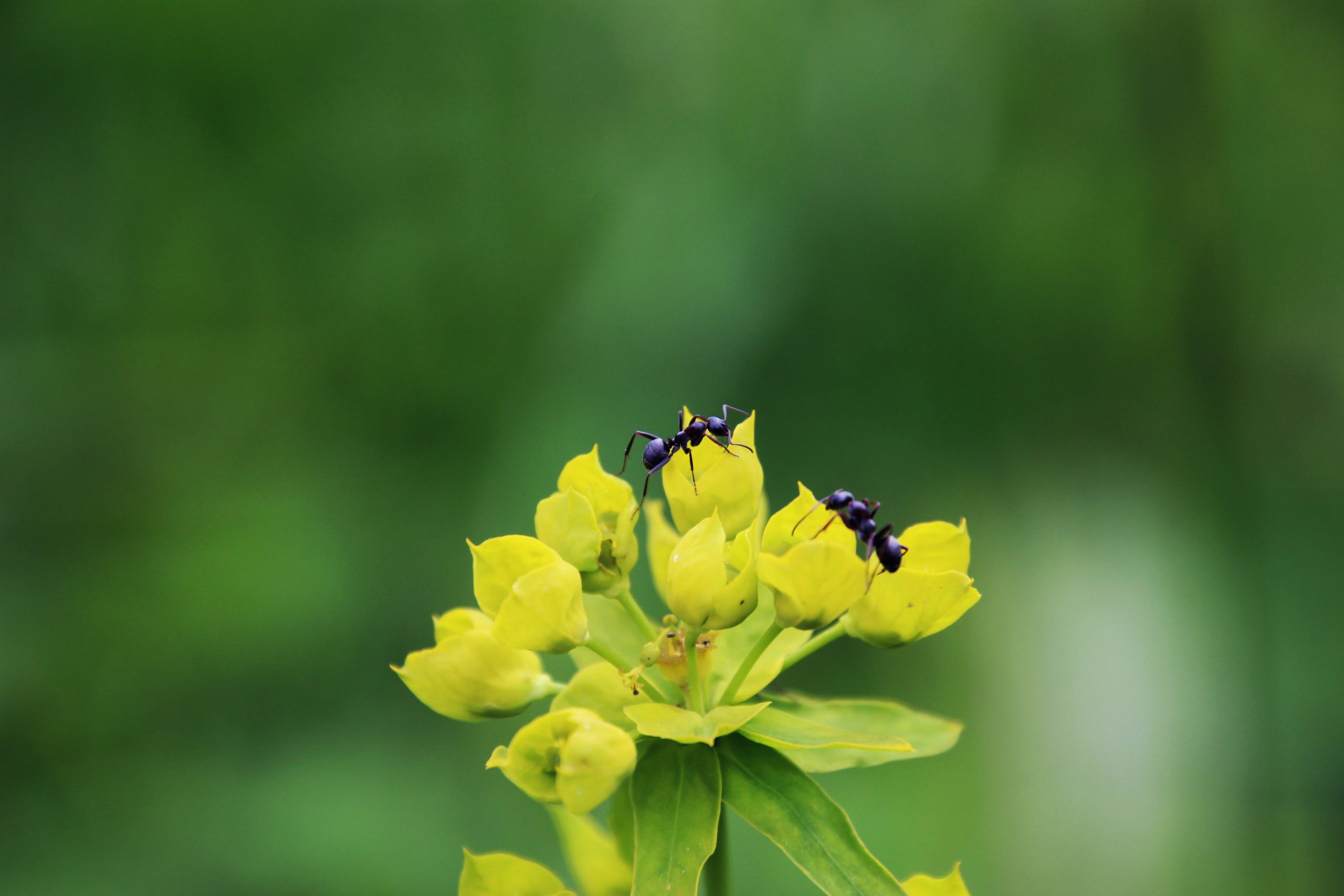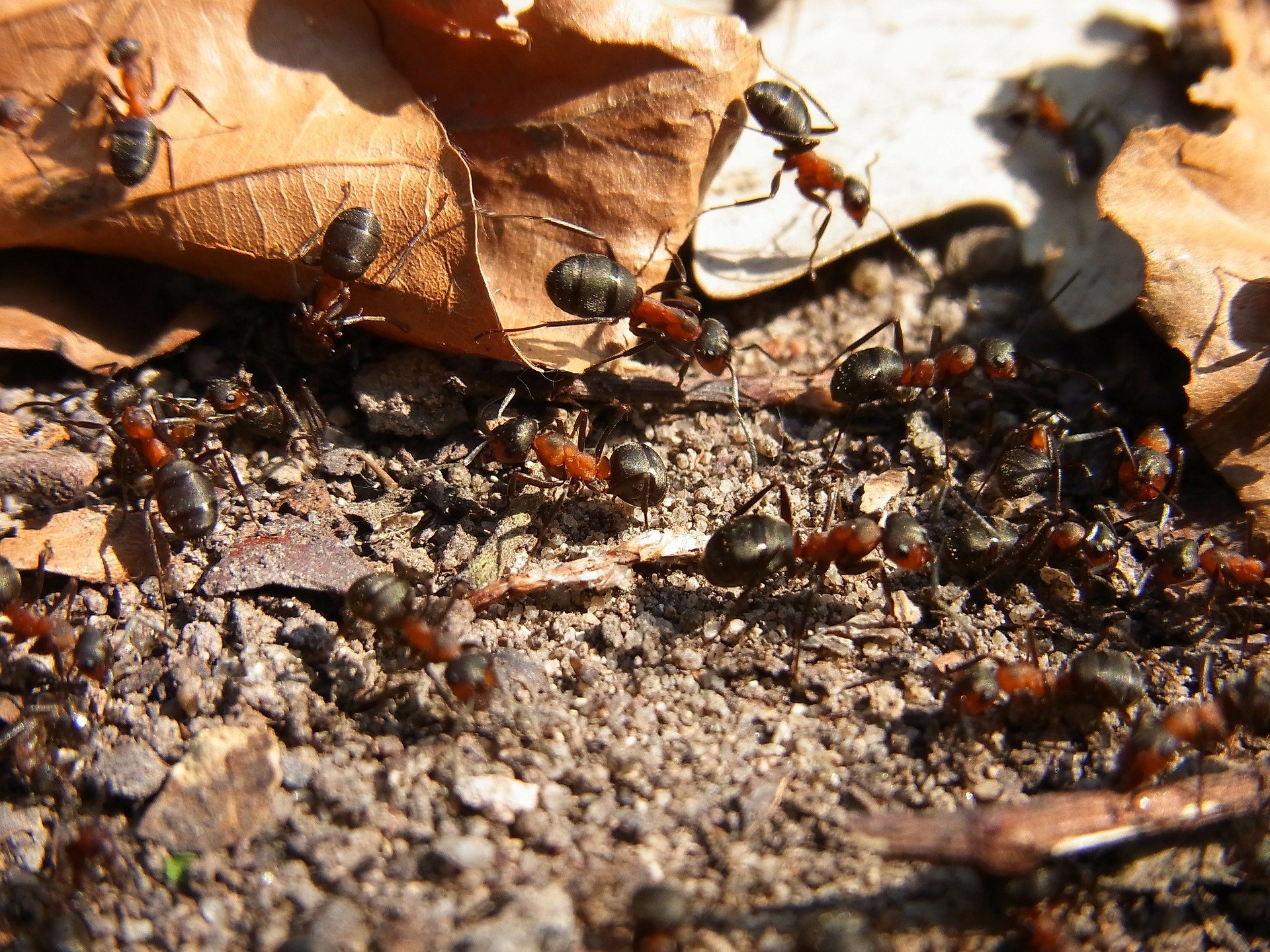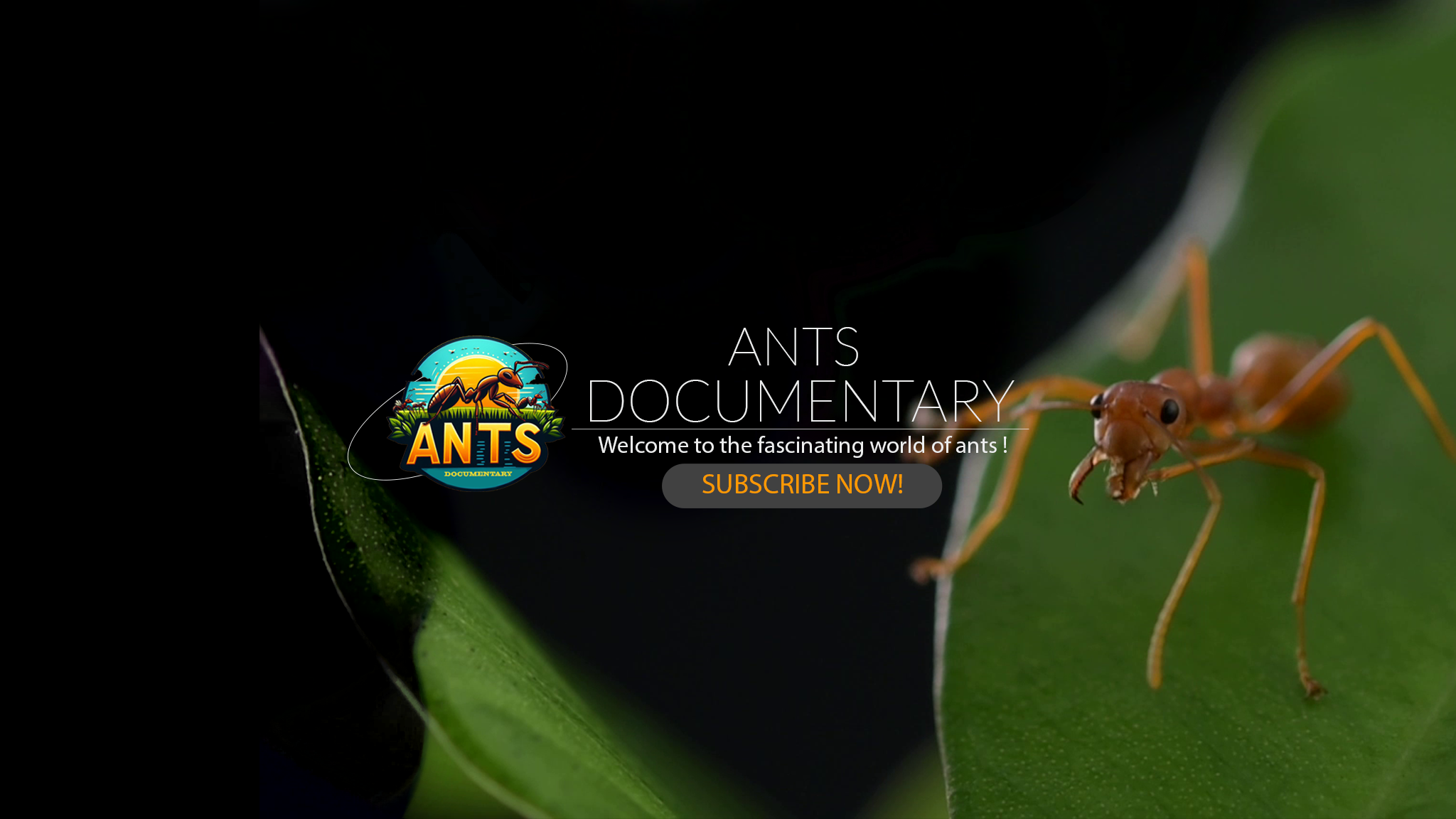Our mission:
We aim to educate, both about the importance of ants to our environment and the ecosystems that are so unique and about the responsible handling of potentially invasive species.
We do not sell ants that are either invasive in Europe or endangered/protected in the region where they are being collected.
What can you do?
Please do not support the trade with invasive ant species. These can damage our ecosystems irreversibly and not only cause harm to native ants but all species in these habitats.
If you cannot or do not want to keep your ant colony any longer, do not release them into the wild under any circumstances. No matter if exotic or native species. Colonies that were kept at home no longer belong in nature. We offer to take back colonies free of charge, otherwise there are various martplaces or social media groups where colonies can be passed on or sold.
Protected species in Germany
The mound-building forest ants, with the exception of the blood-red predatory ant (Formica (Raptiformica) sanguinea), are once again among the specially protected animal species according to the Ordinance on the Revision of the Federal Species Protection Ordinance and on the Adaptation of Further Legislation of 16 February 2005 (BGBl. I p. 258, ber. p. 896 / FNA 791-8-1).
§ Section 39 General protection of wild animals and plants; authorization to issue legal ordinances, contains the general protection that applies as a minimum protection for all wild animal species.
For the specially protected ant species, the general protection has been extended in § 44 BNatSchG.
According to this, forest ants and their developmental forms may not be taken from nature or even killed. Any interference with the nest structure is strictly prohibited.
There is an absolute ban on possession and marketing as well as a traffic ban for forest ants.
All violations are considered an administrative offense and may even be punished by imprisonment.
Formica aquilonia
Formica bruni
Formica exsecta
Formica foreli
Formica forsslundi
Formica lugubris
Formica nigricans
Formica polyctena
Formica pratensis
Formica pressilabris
Formica rufa
Formica truncorum
Formica uralensis
The current ants listed as “invasive species”
Even though some of these species prefer warm climates, they can adapt extremely well and are therefore one of the greatest threats to our ecosystems and biodiversity.
Anoplolepis gracilipes (Yellow crazy ant)
Native: Africa
Invasive: Australia, Hawaii and the Indian Ocean
Linepithema humile (Argentine ant)
Native: South America
Invasive: all six continents in sub-tropical and temperate regions
Risk: decrease in ant biodiversity and the disruption of native ecosystems
Pheidole megacephala (African big-headed ant)
Native: South africa
Invasive: temperate and tropical climate zones around the world
Risk: It is a serious threat to biodiversity through the displacement of native invertebrate fauna and is a pest of agriculture as it harvests seeds and harbours phytophagous insects that reduce crop productivity. Pheidole megacephala are also known to chew on irrigation and telephone cabling as well as electrical wires.
Solenopsis invicta (Red imported fire ant)
Native: South America
Invasive: almost world-wide, in the northern hemisphere only indoors
Wasmannia auropunctata (Electric ant)
Native: South America
Invasive: Australia, Asia, Africa and the USA
Risk: reducing species diversity, reducing overall abundance of flying and tree-dwelling insects, and eliminating arachnid populations
Lasius neglectus
Native: Asia
Invasive: Europe
Risk: negative effects are caused by the enormous numbers of ants tending aphids on trees and occupation of electrical conduits in homes and gardens.
Monomorium pharaonis (Pharaoh ant)
Native: India or Africa
Invasive: on all six continents but in temperate climate only inside buildings
Risk: Due to Monomorium pharaonis’ ability to act as a vector for some bacterial human pathogens, its presence in hospitals is of great concern as it may increase infection rates.
Paratrechina longicornis (Crazy ant)
Native: Africa
Invasive: world-wide
Solenopsis geminata (Tropical fire ant)
Native: from Southern USA to Northern South America
Invasive: almost world-wide
Risk: crop damage caused by its tending of honeydew-producing insects
Tapinoma melanocephalum (ghost ant)
Native: Unknown
Invasive: indoor areas world-wide
Risk: can transport pathogenic microbes in hospitals
Tapinoma sessile
Native: North America
Invasive: Europe and Asia
Lepisiota frauenfeldi (Browsing ant)
Invasive: Australia
Monomorium destructor (Singapore ant)
Native: from India to Africa
Risk: Monomorium destructor is known to cause extensive economic damage in urban environments by gnawing holes in fabric and rubber goods, removing rubber insulation from electric and phone lines and damaging polyethylene cable.
Monomorium floricola (Brownish-red flower ant)
Invasive: tropical and sub-tropical regions
Myrmica rubra (European fire ant)
Native: Europe and Asia
Invasive: only in North America
Nylanderia (Paratrechina) pubens (Caribbean crazy ant)
Native: South America and the caribbean
Invasive: in Buildings
Risk: especially problematic because it is known to accumulate in electrical equipment causing short circuits, clogging switching mechanisms, and causing equipment failure.
Pachycondyla chinensis (Asian needle ant)
Native: East Asia
Invasive: in the USA
Solenopsis papuana (Papuan thief ant)
Native: Pacific region
Invasive: in Hawaii and New Zealand but does not belong to the major pests
Solenopsis richteri (black imported fire ant)
Native: South America
Invasive: in the USA
Risk: damages crops, impedes recreational activities and can undermine roads and asphalt
Technomyrmex albipes (white-footed ant)
Native: Indo-Pacific
Invasive: Australia, Africa, North America, Asia usually indoor
Find us on YouTube
Follow us on a journey around our astonishing planet to get to know the most exciting and interesting ant species.
From encounters in and around our homes to the most remote regions and their hidden inhabitants. Learn more about how dependent not only certain ants are on their environment and other animals they share it with but also the other way around.
They have been on our planet for millions of years and we still don’t know very much about them. Let’s change that and see what we can learn from them!





